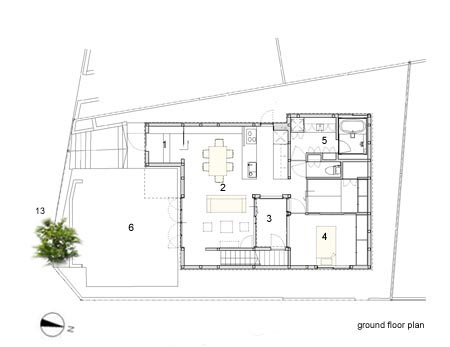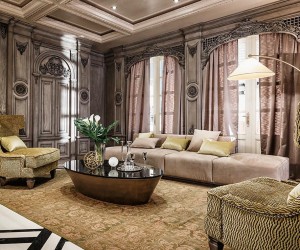
Minimalist Japan Clean Lines, Simple Style
The Essence of Japanese Minimalism
Japanese minimalism, often referred to as “wabi-sabi,” isn’t just about decluttering; it’s a philosophy deeply rooted in appreciating the beauty of imperfection and simplicity. It’s about finding peace and tranquility in a space free from visual clutter, allowing you to focus on what truly matters. This aesthetic prioritizes clean lines, natural materials, and a sense of calm, fostering a harmonious environment that reflects inner peace.
Clean Lines and Functionality
Clean lines are paramount in Japanese minimalist design. Furniture is often low-profile and functional, with a focus on simple silhouettes and a lack of unnecessary ornamentation. Think sleek, uncluttered surfaces, straight lines, and a preference for natural, unbleached materials like wood and bamboo. The emphasis is on practicality and functionality, with each piece serving a purpose and contributing to the overall sense of order.
The Importance of Natural Materials
Natural materials play a crucial role in creating the serene atmosphere of a Japanese minimalist space. Wood, bamboo, paper, and stone are favored for their inherent beauty and connection to nature. These materials bring warmth and texture, counterbalancing the clean lines and minimalist aesthetic. The use of natural materials also contributes to a sense of grounding and connection to the earth, further enhancing the feeling of tranquility.
Color Palette: Neutrals and Earthy Tones
The color palette in Japanese minimalist design is typically subdued and calming, relying heavily on neutrals like white, beige, gray, and black. Earthy tones such as browns and greens are also frequently incorporated, creating a sense of harmony with the natural world. These colors create a backdrop that allows the natural materials and functional pieces to take center stage, preventing visual overload and promoting a sense of peace.
Light and Space: Maximizing Openness
Light is essential in Japanese minimalist design. Natural light is maximized through the use of large windows and skylights, creating a bright and airy atmosphere. The use of light colors and reflective surfaces further enhances the sense of spaciousness, making even smaller rooms feel open and welcoming. This emphasis on light and space is crucial for achieving the feeling of serenity and calm that is central to the aesthetic.
Decluttering and Organization: The Foundation of Minimalism
Decluttering is fundamental to Japanese minimalism. Only essential items are kept, with everything having its designated place. Storage solutions are often built-in and seamlessly integrated into the design, ensuring that everything is neatly organized and out of sight. This careful curation of belongings contributes to the sense of calm and order that defines this aesthetic.
The Role of Negative Space
Negative space – the empty space surrounding objects – is a key element in Japanese minimalist design. It’s not about emptiness, but rather about allowing the eye to rest and appreciate the beauty of simplicity. The strategic use of negative space emphasizes the importance of each object, highlighting its form and function. This creates a feeling of spaciousness and clarity, promoting a sense of calm and tranquility.
Incorporating Traditional Japanese Elements
While minimalism focuses on

































 Your property plans will establish everything from the aesthetics of your property, to its structural integrity and how effectively your income is spent. Our designers have personally picked their prime-promoting, builder-preferred and most popular plans. Most plans can be customized to your specifications, with Cost-free modification estimates for almost all designs. Alterations to our property plans are produced straight to the CAD file, creating it a more effective and an affordable way for you to modify your dream home. Utilizing custom drawn plans can delay the building of your property by many weeks There are dozens of home types and literally thousands of plans to select from, so you can be confident to find the house of your dreams.
Your property plans will establish everything from the aesthetics of your property, to its structural integrity and how effectively your income is spent. Our designers have personally picked their prime-promoting, builder-preferred and most popular plans. Most plans can be customized to your specifications, with Cost-free modification estimates for almost all designs. Alterations to our property plans are produced straight to the CAD file, creating it a more effective and an affordable way for you to modify your dream home. Utilizing custom drawn plans can delay the building of your property by many weeks There are dozens of home types and literally thousands of plans to select from, so you can be confident to find the house of your dreams.
 …
…
 I grew up in New Orleans, Louisiana in the 1950s and it was like a distinct world from the New Orleans of right now. Be producing some, my hive boxes have a rebate so as the frame sits on the ledge there is nonetheless a bee space below it, you can obtain these runners from bee suppliers in the uk so I will be adding these, but this is the very best design I have seen, can not wait to get started.
I grew up in New Orleans, Louisiana in the 1950s and it was like a distinct world from the New Orleans of right now. Be producing some, my hive boxes have a rebate so as the frame sits on the ledge there is nonetheless a bee space below it, you can obtain these runners from bee suppliers in the uk so I will be adding these, but this is the very best design I have seen, can not wait to get started.